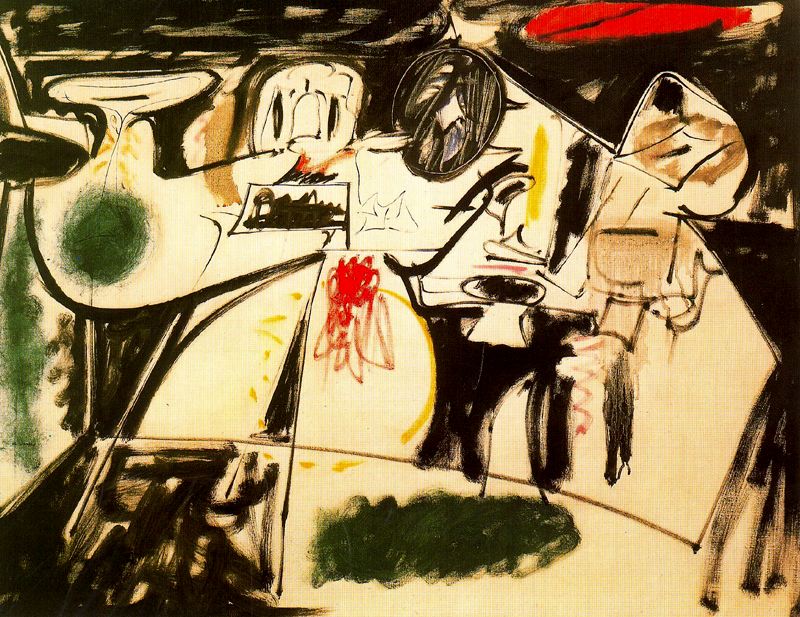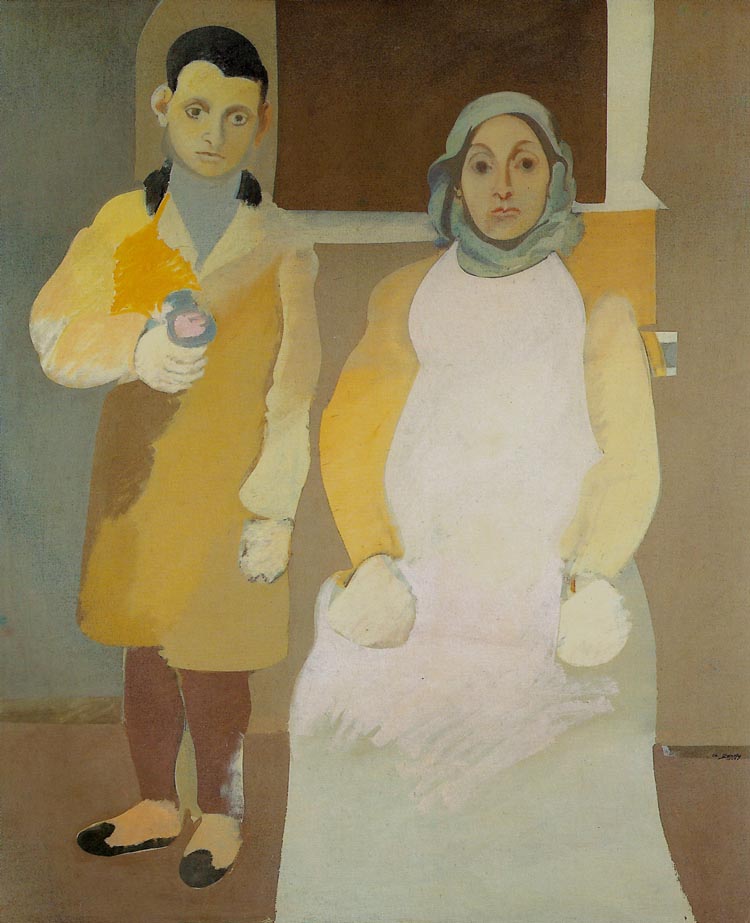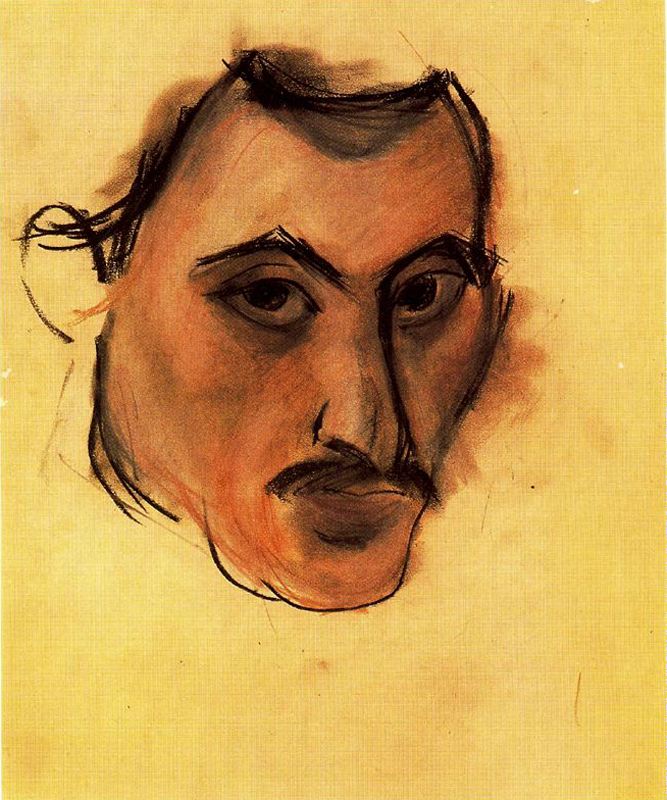
The best Blog on Art from the Caucasus, contributed and read worldwide + der Schützenpanzer unter den Kunstblogs + + Visuals Virtual Reality Caucasus Style + Net + Tbilisi and beyond
Showing posts with label History. Show all posts
Showing posts with label History. Show all posts
Thursday, February 21, 2013
Tuesday, March 31, 2009
Tuesday, February 17, 2009
ART: Arshile Gorky
 The Last Painting, 1948, Oil on canvas78,1 x 101 cmFoundation Thyssen-Bornemisza, Lugano, Switzerland
The Last Painting, 1948, Oil on canvas78,1 x 101 cmFoundation Thyssen-Bornemisza, Lugano, SwitzerlandArshile Gorky was born Vosdanik Adoian in the village of Khorkom, province of Van, Armenia, on April 15, 1904. The Adoians became refugees from the Turkish invasion; Gorky himself left Van in 1915 and arrived in the United States about March 1, 1920. He stayed with relatives in Watertown, Massachusetts, and with his father, who had settled in Providence, Rhode Island. By 1922 he lived in Watertown and taught at the New School of Design in Boston. In 1925 he moved to New York and changed his name to Arshile Gorky. He entered the Grand Central School of Art in New York as a student but soon became an instructor of drawing; from 1926 to 1931 he was a member of the faculty. Throughout the 1920s Gorky's painting was influenced by Georges Braque, Paul Cézanne, and, above all, Pablo Picasso. In 1930 Gorky's work was included in a group show at the Museum of Modern Art in New York. During the thirties he associated closely with Stuart Davis, Willem de Kooning, and John Graham; he shared a studio with de Kooning late in the decade. Gorky's first solo show took place at the Mellon Galleries in Philadelphia in 1931. From 1935 to 1937 he worked under the WPA Federal Art Project on murals for Newark Airport. His involvement with the WPA continued into 1941. Gorky's first solo show in New York was held at the Boyer Galleries in 1938. The San Francisco Museum of Art exhibited his work in 1941. In the 1940s he was profoundly affected by the work of European Surrealists, particularly Joan Miró, André Masson, and Matta. By 1944 he met André Breton and became a friend of other Surrealist emigrés in this country. Gorky's first exhibition at the Julien Levy Gallery in New York took place in 1945. From 1942 to 1948 he worked for part of each year in the countryside of Connecticut or Virginia. A succession of personal tragedies, including a fire in his studio that destroyed much of his work, a serious operation, and an automobile accident, preceded Gorky's death by suicide on July 21, 1948, in Sherman, Connecticut. Guggenheim Collection Biography
full post >>>
Vostanik Adoyan, besser bekannt unter dem Pseudonym Arshile Gorky (* 15. April 1904 [1] in Khorkom, Vari Hayoz Dzor, Vilayet Van; † 21. Juli 1948 in Sherman, Connecticut, USA) war ein aus dem heute zur Türkei gehörenden West-Armenien stammender Zeichner und Maler, der 1939 die amerikanische Staatsangehörigkeit annahm. Er war, obwohl er selbst sich der Gruppe der Surrealisten nicht zugehörig fühlte, der letzte in diese Gruppe aufgenommene Künstler. Sein Werk war wegbereitend für den Abstrakten Expressionismus. Es inspirierte die Künstler der New Yorker Schule.
Unter seinem aus der kaukasischen Form des armenischen Vornamens Arshak oder Arsakes (von persisch: kleiner Bär) und dem russischen Nachnamen Gorky (bitter) zusammengesetzten Pseudonym schuf der heimatvertriebene Künstler sich ab 1924 eine neue Identität. Er schilderte sein früheres Leben auf unterschiedliche, nicht immer wahrheitsgetreue Weise. Er nannte beispielsweise Tiflis als Geburtsort, behauptete, in Paris studiert zu haben [2] und gab sich als Mitglied der Pariser Künstlergruppe Abstraction-Création (1931-1937) aus, sowie als Angehörigen von Maxim Gorki, ohne dabei zu berücksichtigen, dass dieser ebenfalls ein Pseudonym angenommen hatte. Des Weiteren legte Gorkys Neffe Karlen Mooradian Ende der 60er und Anfang der 70er Jahre englische Übersetzungen von Briefen vor, die Gorky in armenischer Sprache an seine Schwestern geschrieben haben soll und deren Authentizität heute in Frage gestellt wird. Da sowohl Gorkys Aussagen, als auch die vermutlich gefälschten Briefe in viele Biografien einflossen, ist vor allem der Schilderung von Gorkys erstem Lebensabschnitt mit entsprechender Skepsis zu begegnen.
Wikipedia: http://de.wikipedia.org/wiki/Arshile_Gorky
 The Artist and his Mother, c. 1926-36, Oil on canvas, 52 x 127 cm, Whitney Museum of American Art, New York
The Artist and his Mother, c. 1926-36, Oil on canvas, 52 x 127 cm, Whitney Museum of American Art, New York Self-portrait, 1926, Pastel and graphite on paper, 36,2 x 28,6 cm, Private collection
Self-portrait, 1926, Pastel and graphite on paper, 36,2 x 28,6 cm, Private collection
Saturday, January 24, 2009
EXHIBITION: Jörg Herold - Der Dokumentararchäologe im Land der beschleunigten Folklore (EIGEN+ART, Berlin)
January 24 2009 - March 21 2009
TODAY: opening January 24 2009
5 - 9pm
I made two art-documentary travels through the South Caucasus with the german artist Jörg Herold in the last times. Now you can visiting a summary of this work in Berlin. Something could you see in the last year in Leipzig and Schwerin. It will be following a catalog or better an art documentary of this art travels. (Ralph Hälbig)

In his function as a "documentation - archaeologist" as Jörg Herold calls himself, he follows the mechanism of remembrance, securing, saving, investigation and research in his work progress. As a result of traveling into real and imagined memories emerge actions, films, installations, and drawings, which are holding the focus on cultural commemoration and historical cross-references.
On the basis of 30 motives, ethnographical as well as ethnological templates and historical documents like travel reports, Jörg Herold is questioning through a virtual created “ land of accelerated folklore" the strange and unknown with a critical view of today. The installations, which arise out of that background, combine the media painting, sculpture and movie. Thereby the Petersburger Style of hanging the canvas in the gallery will be broken open by stalactites and a couple mountain ranges. The archaic appearing massif is presented on wooden brackets and shows amongst others the Ararat, Holy Mountain of the Armenians the disembarkment point of Noah's Ark.
In the front part of the exhibition, where his work “Vitrinensturz" is presented, Jörg Herold comments on the skull aesthetic of Johann Friedrich Blumenbach, a Professor in Göttingen/ Germany from the 19th century.
Based on his favorite skull of a Georgian woman, Blumenbach assigned to the central-Europeans a preferred, high-class position.
In the centre of the first room the sculpture "Stalins Rache" is suspended from the ceiling that inherits the name of one of the most notorious dictators in our history. The pasty work on canvas "Fadenhalter" hangs at the wall behind the sculpture and refers to the scripts of "Heimweh" by Jung Stilling. This publication came along with numerous German emigrants in the 18th century and describes the second future of Christi in Solyma in the Caucasus. In this comparison Jörg Herold refers to different forms of identity in a local and global context, aspect of violence and its consequence on nature and landscapes.
The centric mission in the work of a documentary archaeologist is to depict the possibilities of the memory for the future and to accentuate the conflict between aesthetic and ethic in presentation.
The film "Steinmeiers Erben" that is installed in the second room of the exhibition thematizes the recent journeys of Walter Steinmeier, the foreign minister of Germany, that give him an official view of the situation in European peripheral regions. Therefore the film builds a bridge to the installation "Des Nachbars Zaun" that is placed at the left wall at the first room and which represents the boundary shift into the east.
Jörg Herold aspires as a witness to history to dilute conserved time for a short moment by using media installations, painting, sculpture and film. Travelogues cut in fine filaments float out of the fence, besides a whole that dismantles the texture of the wall and even the sequence of the works on canvas is fractured by the roughness of the piled up mountains. Therefore the recorded gets in motion and the installation becomes a liquid concentrate of memories for the documentary archaeologist on his journey to the country of speeded folklore.
in german >>>
Auguststrasse 26
D - 10117 Berlin
Phone.: +49.30.280 6605.
Fax: +49.30.280 6616.
mail to: berlin@eigen-art.com
Tuesday - Saturday 11am - 6pm
www.eigen-art.com
More photos and documentaries cominng soon here in georgien.blogspot.com.
TODAY: opening January 24 2009
5 - 9pm
I made two art-documentary travels through the South Caucasus with the german artist Jörg Herold in the last times. Now you can visiting a summary of this work in Berlin. Something could you see in the last year in Leipzig and Schwerin. It will be following a catalog or better an art documentary of this art travels. (Ralph Hälbig)

In his function as a "documentation - archaeologist" as Jörg Herold calls himself, he follows the mechanism of remembrance, securing, saving, investigation and research in his work progress. As a result of traveling into real and imagined memories emerge actions, films, installations, and drawings, which are holding the focus on cultural commemoration and historical cross-references.
On the basis of 30 motives, ethnographical as well as ethnological templates and historical documents like travel reports, Jörg Herold is questioning through a virtual created “ land of accelerated folklore" the strange and unknown with a critical view of today. The installations, which arise out of that background, combine the media painting, sculpture and movie. Thereby the Petersburger Style of hanging the canvas in the gallery will be broken open by stalactites and a couple mountain ranges. The archaic appearing massif is presented on wooden brackets and shows amongst others the Ararat, Holy Mountain of the Armenians the disembarkment point of Noah's Ark.
In the front part of the exhibition, where his work “Vitrinensturz" is presented, Jörg Herold comments on the skull aesthetic of Johann Friedrich Blumenbach, a Professor in Göttingen/ Germany from the 19th century.
Based on his favorite skull of a Georgian woman, Blumenbach assigned to the central-Europeans a preferred, high-class position.
In the centre of the first room the sculpture "Stalins Rache" is suspended from the ceiling that inherits the name of one of the most notorious dictators in our history. The pasty work on canvas "Fadenhalter" hangs at the wall behind the sculpture and refers to the scripts of "Heimweh" by Jung Stilling. This publication came along with numerous German emigrants in the 18th century and describes the second future of Christi in Solyma in the Caucasus. In this comparison Jörg Herold refers to different forms of identity in a local and global context, aspect of violence and its consequence on nature and landscapes.
The centric mission in the work of a documentary archaeologist is to depict the possibilities of the memory for the future and to accentuate the conflict between aesthetic and ethic in presentation.
The film "Steinmeiers Erben" that is installed in the second room of the exhibition thematizes the recent journeys of Walter Steinmeier, the foreign minister of Germany, that give him an official view of the situation in European peripheral regions. Therefore the film builds a bridge to the installation "Des Nachbars Zaun" that is placed at the left wall at the first room and which represents the boundary shift into the east.
Jörg Herold aspires as a witness to history to dilute conserved time for a short moment by using media installations, painting, sculpture and film. Travelogues cut in fine filaments float out of the fence, besides a whole that dismantles the texture of the wall and even the sequence of the works on canvas is fractured by the roughness of the piled up mountains. Therefore the recorded gets in motion and the installation becomes a liquid concentrate of memories for the documentary archaeologist on his journey to the country of speeded folklore.
in german >>>
| Galerie EIGEN + ART Leipzig/Berlin | ||
| | Gerd Harry Lybke Geschäftsführung/Partner: Kerstin Wahala | |
| | ||
| Die naechste Ausstellung eroeffnet in Leipzig mit Ricarda Roggan am 17. Januar 2009. In Berlin eroeffnet Joerg Herold am 24. Januar 2009. | ||
Auguststrasse 26
D - 10117 Berlin
Phone.: +49.30.280 6605.
Fax: +49.30.280 6616.
mail to: berlin@eigen-art.com
Tuesday - Saturday 11am - 6pm
www.eigen-art.com
More photos and documentaries cominng soon here in georgien.blogspot.com.
Labels:
Archaeology,
Berlin,
Caucasus,
Exhibition,
Germans,
History,
Jörg Herold,
Stalin
Subscribe to:
Posts (Atom)


















